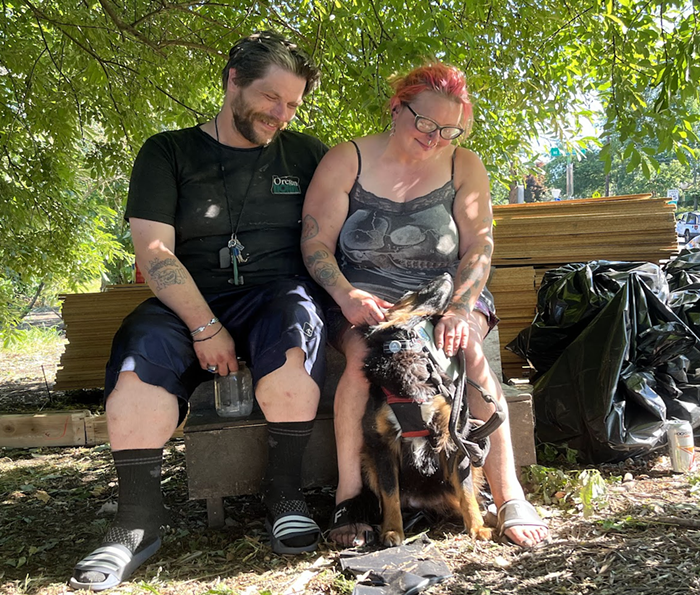
Stepping up to the door of Sanity TV, I was handed a chair. Once I entered that door, my chair and I were thrust into the world of a fictional daytime talk show. Autumn Knight performed as the talk show's host, and she also guided people (and their chairs) into constructions around the room: a few rows, people seated at angles, people on risers, some (myself included) faced a wall. Video projected onto the wall I was facing, taken from cameras filming the unfolding show.
Once Knight placed the audience into her desired configurations, Sanity TV commenced. Anyone in the studio audience could be forced into the role of an interview subject. For the hour or so that followed, Knight hilariously terrorized attendees, putting them on the spot in unexpected ways. The performance was playful, imaginative, occasionally fun, and often a little mean-spirited.
It seems less useful to talk about Sanity TV in terms of sanity or insanity, and perhaps better to talk about it in terms of the real and the surreal, or the emotionally resonant and the purely absurd. An almost entirely improvised event, Knight nimbly guided her guests into innovative places—physically and emotionally—that blurred the lines of their experience.

Knight interviewed one woman and instructed her to respond as if she were a baby bear who ran 200 sheep off a cliff. Knight picked a man she thought resembled William Shakespeare and repeatedly called upon him for comment (from the perspective of the great bard). A long conversation ensued about roaches and whether they could be cute. Prayers and poems about roaches were improvised, followed by a “roach dance” where the lights dimmed, Knight put her head on a woman's shoulder, and tickled her neck to the woman's visible discomfort.
During a Janet Jackson dance break, Knight insisted some members of the audience dance, while others were told to remain still. With all the cameras and wall projections also visable this created a scene similar to what the '90s MTV dance show The Grind might have looked like if it was about introverts being forced to dance against their will.
The intended take-away from the night is up for debate. It was a look at power dynamics within a room, surely. It was an exercise in creating fictional worlds as a group. It questioned the separation between performer and viewer. Knight repeatedly explored race relations within a culture of white privilege, but the line between what was a statement and what was a parody of seeing that tension play out on live TV Knight largely left up for interpretation.
With its improvised nature, each person and moment of Sanity TV felt like a wildcard. Knight's main goal didn't seem to be set on imparting a specific lesson or meaning. She was more interested in following the surprises and accidents to see what new, unexpected lines of inquiry would emerge.

With a less reserved, less passive the show would have been very different. I didn't want to draw attention to myself and (as far as I could tell) neither did anyone else. This meant Sanity TV played out with a room full of people laughing nervously for an hour, similar in feeling to a classroom of school kids trying not to get called on by the unpredictable teacher.
Near the end, Knight asked a woman asked to give a rattle to a baby in the audience. Then, once the baby had discovered the rattle's great joys, Knight asked her to take the rattle back.
“Take the rattle from the baby,” Knight insisted. The woman tried to work up the nerve to remove the rattle from the baby's hand. “What have you learned about me?” Knight asked the woman after she finally managed to take the rattle. “I think you want to make me uncomfortable,” the woman answered tentatively. “And I think you like it.”
We're wrapping up our TBA 2018 coverage, but we have a few more things to say! Keep up with us for our reviews and critical impressions at: portlandmercury.com/tba












